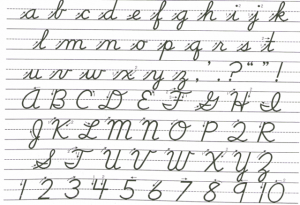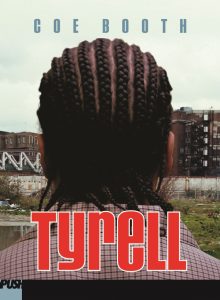Zoology is a virtual game that can be played with an Oculus Rift headset or google cardboard. Its objective is to raise awareness to the tightly compiled spaces, night cages, and poor living conditions animals endure while living in zoos, circuses, and aquariums. The zoo segment is inside chapter 1. The game begins with the player being a zookeeper. The goal is for the zookeeper is to rescue all the animals in the zoo within 30 hours. Doing so, the zookeeper will encounter a series of mini games that will teach the player how to rescue each type of animal. Once all the animals are out of the zoo, the zookeeper will drop all the animal off at a set location, built within the game. Then the player will be able to advance to chapter 2. Chapter 2 will be the same concept but now the zookeeper will be rescuing animals from the circus. Finally, will be Chapter 3 where the zookeepers mission is to rescue all fish in the aquarium and return them back to the ocean. All in all, this game will be educational and entertaining, and a fun way to learn about animals and animal cruelty.
The whole idea of keeping animals in zoos can have positive and negative impacts. There has been examples of animal cruelty inside of zoos. Many cruelty treated zoo animals experience negative changes in behavior. The New York Times Upfront stated, “Zoos provide animals with few opportunities to engage in natural behavior and little mental stimulation. In these artificial, restricted conditions, animals may have a mental breakdown and develop “zoochosis”–a form of psychosis that can cause them to sway or pace continually, chew on their own limbs until they bleed, or pull out their own fur or feathers” (New York Times Upfront, “Are Zoos Ethical?”). This article is stating that zoo animals can experience detrimental mental effects from living in the zoo that can cause them to hurt themselves. Worland stated, “….. giving new insights into how they may suffer from anxiety and depression when they are removed from nature” (Worland, “The Future of Zoos”). Worland is stating that the zoo animals are also suffering from anxiety and depression just from living in captivity.
When releasing the animals back into the wild, they might have trouble adjusting to life outside of captivity. Morell Virginia stated, “The young science of reintroduction biology is struggling to map out those strategies for success” (Virginia, “Into the Wild: Reintroduced Animals Face Daunting Odds”). Virginia is insisting that zoo animals have not been very successful in adjusting to their new lives after being released. We should release the animals into the preserves or sanctuaries to help them be able to survive. We should track the animals and monitor them every once and awhile so they don’t struggle with adjusting to a new lifestyle. As an alternative to people visiting zoos, we are offering people the ability to see and learn about the animals in the new virtual reality game that we have created. Our goal is to prevent all animals from behavioral changes, by teaching kids why and how places like zoos, circuses, and aquariums impact the animals lives
User Interface is the varying method of having interactive visuals for the user to respond to. Think of an iPhone; it’s easy to use because of it’s interface which includes legible text, icons, and colors that are attractive to the brain. In Zoology, we are able to navigate it by a main menu, which shows levels and settings. With your VR headset and haptic feedback gloves, you will have a holographic imagery of the main menu, settings, and you will be able to click what you want to do next by just reaching out. However, a cheaper and simpler alternative will include a joystick, and google cardboard. In the game, our goal is to educate about animals and life captive in the zoo. With the addition of a story and virtual graphics we are able to enrich that experience and add some fun.
The proper user experience comes with an easy navigational experience. The choices of using a joystick, haptic feedback gloves or a balance board. Joystick which is the common and more traditional game controller will have a twist in which instead of a screen that you look at, you will have goggles on to mimic the VR 3D effect. Nevertheless, users will not have the complete experience to feel like you’re in Zoology world, because it uses less resources and is less expensive. It can be used with consoles such as Sony’s playstation and Microsoft’s Xbox. Since Wii was built on the idea of user motion, we will try to improve its use of balance boards and joysticks to recreate a more realistic movement experience in the virtual world. According to research done in Comparing two types of navigational interfaces for Virtual Reality, Forty university students participated in this study. Results show that participants were more efficient when performing navigation tasks using the Joystick than with the Balance Board. This statement proves that the Balance board isn’t yet completely ideal for the accessibility when it comes to virtual reality. Haptic feedback is a tool that will be increase the effect of realism when playing console games.
Zoology is operated by a virtual headset and gloves set that can take you through the game with the menu options operation being apart of the headset. Additions on the prototype is adding more players to the game so that multiple people can rescue the animals and players will also be able to challenge one another. Past the prototype, the headsets will be able to sync to other headsets online, and around the world. Once headsets are able to sync around the world, multiple people will be able to choose options to rescue animals around the world from bad habitats.
The target audience of our Virtual Reality game are kids aged 5-12. However, our primary target market are the parents of the children, since they our the main contributors of household income. The Virtual Reality game will demonstrate animal cruelty in a way that’s not obvious. Also it will educate children on different types of species such as, the Rhinopithecus bieti, and the Short nosed sea snake. This game will allow kids to experience these animals first hand rather than to read about them. Its one of our long term goals to be able to sell our Virtual Reality game to public and private schools. This game can be used in animal science classes, or a Bioscience class. Our company feels with the VR game, schools will be able to incorporate it into their curriculum allowing students to be graded on the chapters they complete.
We will sell our game “Zoology” through different Application stores such as iTunes, Google Play, PlayStation 4, and XBOX One. For PlayStation 4 and XBOX One, the game will cost $23.99. People will have to use a VR headset to play the game on XBOX One and PlayStation 4. On the two applications store such as iTunes and Google Play, the game would only cost $2.99. Also, users will be able to use Google Cardboard to play the game on their phone. We will promote our game “Zoology” through various social media handles such as, Facebook, Twitter, and Instagram. Plus, we will pay famous Youtubers gamers to promote our game on their channel. Also, we will create an advertisement to be played on Youtube and on Television which will consist of a video that demonstrates trailers of the different parts of the game. On top of that, when people explore different websites, they will have the ability to see the advertisement on the side of their webpage. Lastly, we will also create unique flyer to be hung at game shops and and featured in magazines like the National Geographic.
This game has potential to raise awareness about the intentions of zoos, circuses, aquariums and all animal captive environments. We believe this game will start making children have mixed emotions about these places. For instance author Lisa Uddin, stated in her book Zoo Renewal “what is it about zoos that provokes our bad feelings?” (Uddin). Children will realize watching animals suffer, and perform for human entertainment is not right. In addition, this game could influence a change in policy for these companies. For example, circuses can prohibit the use of animals, or zoos can change their concept and only be used for learning purposes of rare breed species. Only animals that are exotic and or going into extinction should be cared for at the zoo. On top of that, their environment should resemble the environment in the wild. Therefore each animal should have a large amount of space with trees and insects.
Nevertheless, this virtual game can also be therapeutic to people that have a zoo-phobia or a ophidio-phobia. Patients would be able to hold and interact with the animals that they have a fear of touching in the real world. Virtual Reality has been proven to be effective as a healing technique. It may not cure all animal fears, but it has the potential to reduce them.
All in all, this Virtual Reality game is a new and refreshing way to deal with social issues. This game will not only educate, but it will also teach children to be more empathetic towards animals. This game deals with an issue that not fully recognized enough by society. A lot of research went into making this game so we are sure this VR game will be successful.
References
“Are Zoos Ethical?”. New York Times Upfront, vol. 149, Issue 5, 21 November 2016, pp. 22.EBSCOhost, http://ezproxy.stevenson.edu:2063/eds/detail/detail?vid=7&sid=86c2b539-fbb7-46ac-9038-63fbb7f48f9d%40sessionmgr104&bdata=JnNpdGU9ZWRzLWxpdmUmc2NvcGU9c2l0ZQ%3d%3d#AN=119640923&db=eue. Accessed 1 May 2017.
Teixera, Luis. “A VR360° player with enhanced haptic feedback.” VR360HD. ACM, n.d. Web. 10 May 2017. Web.http://dl.acm.org/citation.cfm?id=2993404 Accessed 6 May 2017
Uddin, Lisa. “Zoo Renewal.” Project MUSE. University of Minnesota Press, 2015. Web. 10 May Web.https://muse.jhu.edu/book/39497. Accessed 6 May 2017
Virginia, Morell. “Into the Wild: Reintroduced Animals Face Daunting Odds.” ScienceMagazine, vol. 320, 9 May 2008, pp. 742-743. Web. http://www.rhinoresourcecenter.com/pdf_files/124/1247142843.pdf. Accessed 1 May 2017.
Worland, Justin. “The Future of Zoos.” Time, vol. 189, Issue 7/8, 27 February 2017, pp. 54-61. EBSCOhost, http://ezproxy.stevenson.edu:2063/eds/detail/detail?vid=5&sid=86c2b539-fbb7-46ac-903863fbb7f48f9d%40sessionmgr104&bdata=JnNpdGU9ZWRzLWxpdmUmc2NvcGU9c2l0ZQ%3d%3d#db=a9h&AN=121318862. Accessed 1 May 2017.




